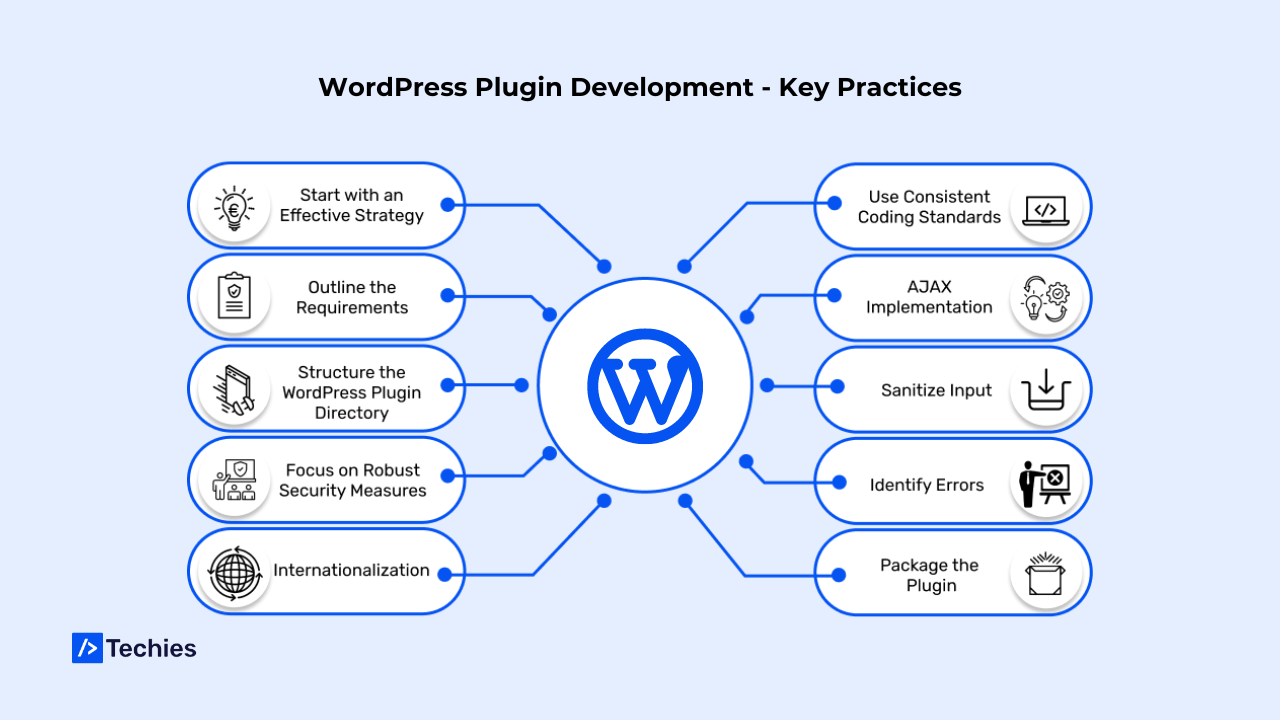Key Practices for Custom WordPress Plugin Development
WordPress plugins play a crucial role in extending the functionality of your website, allowing you to add features and customization to meet your specific needs. However, poorly developed plugins can significantly impact your site’s performance and security.
In recent years, WordPress has experienced a remarkable surge in popularity. WordPress has evolved beyond its origins as a mere blogging platform; it has matured into a comprehensive Content Management System (CMS). As per a report from UKwebhost review, WordPress currently empowers 32% of all websites, underscoring its ever-growing mainstream appeal.
As the platform’s backbone, plugins are indispensable for seamlessly integrating features such as E-commerce stores or contact forms into WordPress sites. Beyond leveraging pre-existing plugins, there’s often a need to develop custom plugins from scratch to fine-tune basic functionalities according to specific requirements. In this blog post, you’ll explore best practices for optimizing your site through custom WordPress plugin development.
What is WordPress plugin development?
Key Practices for WordPress Plugin Development

Start with an Effective Strategy
Outline the Requirements
Structure the WordPress Plugin Directory
Focus on Robust Security Measures
Internationalization
Use Consistent Coding Standards
AJAX Implementation
Sanitize Input
Identify Errors
Package the Plugin
Conclusion
Creating great WordPress plugins requires careful planning and attention to detail. Embracing these best practices ensures your plugins are finely tuned for performance, compatibility, and user contentment. Whether it’s structuring your codebase and directory hierarchy, furnishing comprehensive documentation, or optimizing your plugin’s presentation for heightened visibility, each step contributes to elevating the caliber and efficacy of your WordPress plugins.
Ready to build better Custom WordPress plugins?
Enhance your website's functionality and delight your users
FAQ's
What skills are required for WordPress plugin development?
Proficiency in PHP, understanding of WordPress architecture including MVC architecture, knowledge of MySQL and AJAX, and familiarity with HTML and CSS are essential for WordPress plugin development.
What are the benefits of using WordPress plugins?
WordPress plugins offer enhanced functionality, customization options, and scalability to WordPress websites, enabling users to extend and tailor their sites to meet specific needs and preferences.
How can I ensure the security of my WordPress plugin?
Implement robust security measures such as sanitizing input, validating data, and using secure coding practices to protect against common vulnerabilities like SQL injection and cross-site scripting (XSS).
What is the importance of following coding standards in WordPress plugin development?
Following coding standards ensures consistency, readability, and compatibility with other plugins and themes, making your plugin easier to maintain and collaborate.

ABOUT AUTHOR
Roopesh Jain
Subscribe to Our Newsletter
Let's Work Together
Office Location
1042, Second Floor, Sector-4, Hiran Magri, Udaipur, Rajasthan - 313002
